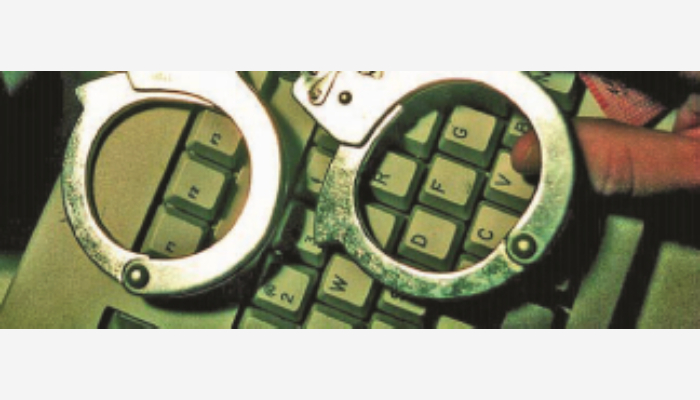
or

Significant amendments proposed to the existing information technology law seek to strengthen the evidentiary value of electronic records. Lets find out how…
The era of Information Technology (IT) has brought in new methods and modes of commission of crime. With the sophistication in IT, the weapons of crime are changing. This has brought into existence a new kind of document called the electronic record. This intangible document is unique as it can be preserved in its original state for a longer period of time through encryption processes reducing the chances of tampering of evidence. This document can be an e-mail, short message, multimedia message or in any other electronic form.
The Indian Evidence Act, 1872 (the Act) and Information Technology Act, 2000 (the IT Act) grant legal recognition to electronic records and evidence submitted in the form of electronic records.
According to section 2(t) of the IT Act, electronic record means data, record or data generated, image or sound stored, received or sent in an electronic form or micro film or computer generated micro fiche. The IT Amendment Act, 2008 recognises various forms of communication devices, like cell phones, personal digital assistant, a combination of both or any other device used to communicate, send or transmit any text, video, audio or image. The IT Act lays down a blanket permission not to deny legal effect to records which are in electronic form as long as they are accessible for future reference.
The definition of evidence in the Act has been amended to include all documents including electronic records produced for the inspection of the court. The IT Act provides legal recognition to electronic records in section 4 wherein it is clearly stated that any law that provides information in any form, including electronic, which is legible is satisfactory for legal recognition.
The evidentiary value of an electronic record totally depends upon its quality, the conditions of which are stated in sections 65A and 65B of the Act as under:
Any information contained in an electronic record which is printed on paper, stored, recorded or copied in an optical or magnetic media, produced by a computer is deemed to be a document and becomes admissible in proceedings without further proof or production of the original, as evidence of any content of the original or any fact stated therein.
In any proceeding, if evidence of an electronic record is to be given, a certificate containing the particulars prescribed by section 65B of the Act should be provided. It should also be signed by a person occupying a responsible official position in relation to the operation of the relevant device or the management of the relevant activities. Section 65 enables secondary evidence of the contents of a document to be adduced if the original is of such a nature as not to be easily movable.
As per the IT Amendment Bill 2008 (passed by both houses of Indian Parliament and yet to be enforced), section 79A empowers the Central Government to appoint any department, body or agency as examiner of electronic evidence for providing expert opinion on electronic form of evidence before any court or authority. As per section 85B of the Act, there is a presumption as to authenticity of electronic records in case of secure electronic records (i.e. records digitally signed as per section 14 of the IT Act). However, presumption will not operate in case of documents which do not fall under the definition of secure electronic records.
The position of electronic documents in the form of short message service, multimedia message service and e-mail in India is well demonstrated under the law and the interpretation provided in various cases. In State of Delhi vs. Mohd. Afzal & Others, it was held that electronic records are admissible as evidence. If someone challenges the accuracy of a computer evidence or electronic record on the grounds of misuse of system or operating failure or interpolation, then the person challenging it must prove the same beyond reasonable doubt.
The basic principles of equivalence and legal validity of both electronic signatures and hand-written signatures and of equivalence between paper document and electronic document have gained universal acceptance. There is still probability of electronic records being tampered with, therefore, complex scientific methods are being devised to satisfy the prime condition of authenticity or reliability which may be strengthened by means of introducing new techniques of security.
Karnika Seth, Managing Partner, Seth Associates.
Mr. Aditya Mukherjee, Associate, Seth Associates.

Lex Witness Bureau

Lex Witness Bureau

Lex Witness Bureau

For over 10 years, since its inception in 2009 as a monthly, Lex Witness has become India’s most credible platform for the legal luminaries to opine, comment and share their views. more...
Connect Us:


The Grand Masters - A Corporate Counsel Legal Best Practices Summit Series
www.grandmasters.in | 8 Years & Counting
The Real Estate & Construction Legal Summit
www.rcls.in | 8 Years & Counting
The Information Technology Legal Summit
www.itlegalsummit.com | 8 Years & Counting
The Banking & Finance Legal Summit
www.bfls.in | 8 Years & Counting
The Media, Advertising and Entertainment Legal Summit
www.maels.in | 8 Years & Counting
The Pharma Legal & Compliance Summit
www.plcs.co.in | 8 Years & Counting
We at Lex Witness strategically assist firms in reaching out to the relevant audience sets through various knowledge sharing initiatives. Here are some more info decks for you to know us better.
Copyright © 2020 Lex Witness - India's 1st Magazine on Legal & Corporate Affairs Rights of Admission Reserved